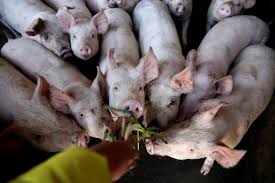You Could Be Doing These 6 Things Wrong When It Comes To Disease Prevention
Simply put, biosecurity in poultry refers to the protection of poultry’s biological features. Although poultry biosecurity may appear to be a difficult task, it is a simple task that can help you expand your agricultural operation.
For most chicken farmers around the world in 2021, including Ghana, it was a difficult year. Most farmers were brought to their knees by the bird flu epidemic and the feed shortage, and most farms were destroyed.
Why is it so vital to have biosecurity in poultry?
Farms are stabilizing to deal with feed shortages, but I’ve noticed a few biosecurity difficulties whenever I visit surrounding chicken farms.
When properly implemented, biosecurity can benefit your farm, but if not, it can cost you your entire life savings.
On their farms, what farmers are doing incorrectly
1. Take a bath to get rid of germs.
When you ask a farmer why he or she doesn’t have a disinfecting bath, you’ll discover that they are aware of what a footbath is but chose to ignore its use. Infections that destroy our farms, on the other hand, are bacteria that are invisible to the naked sight.
Disinfecting footwear and vehicles that come close to poultry farms have been shown to prevent the spread of microorganisms on farms.
2. Infection transmission through feed sources
Feed sources have compromised the bulk of biosecurity in chicken farms. Large-scale farms buy feed from feed manufacturing companies, but they do so based on confidence and biosafety criteria set by these corporations.
Small and medium-sized farms, on the other hand, do not buy tons of feed from suppliers; instead, they mix their feed or enlist the help of neighbors, resulting in innumerable illnesses being spread from one farm to the next.
3. Infectious agents in the workplace
All of the foregoing infection sources, including farmhands, might be considered external infection sources. Workers who have contact with the flock should try to keep their work attire clean. When a farm has both younger and older flocks, labor should start with the younger flock and end with the older flock. If you have extra farmhands, divide them up into sectors and firmly prevent the movement of older birds to younger birds.
Read also:List Of Poultry Farming Equipment And Their Use – A Comprehensive Guide
Diseases will move from older flocks to younger flocks, and immune boosters may not be as efficient as they are in older flocks in treating infections.
4. Providing sufficient water and high-quality feed
They say that what you feed your flock has a direct impact on their growth and performance. Farm animals require nutritious feed as well as water to ensure proper system functioning. Replace their water regularly, and feed them the required amount of feed at the appropriate time.
Feeding management issues can have a significant impact on output and cost you money, time, and other resources. Animal welfare is also a factor in poultry biosecurity.
5. Keeping track of your medication.
While ensuring that all of the above conditions are met, don’t forget to consult the medication charts to see when a specific vaccine or medicament should be administered to the flock. Another important point to keep in mind is to constantly consult your local veterinarian for the most up-to-date medication and vaccine schedules.
Management of the environment.
Farm production requires changing the trash, fumigating the farm, and cleaning the farm environment. Farm animals may be able to live in dirt, but they may not perform as well as they should.
Bacteria and pests can thrive in dirty environments, putting your farm animals’ health at risk and costing you more money to restore their health and meet your production goals.
Finally, biosecurity in poultry should not be underestimated. Every action on the farm must be treated with caution. Feed prices are at an all-time high right now, so resist the urge to increase your farm’s operating costs. Stick to the instructions and you’ll be OK.
I wish you success in your agricultural endeavors.



